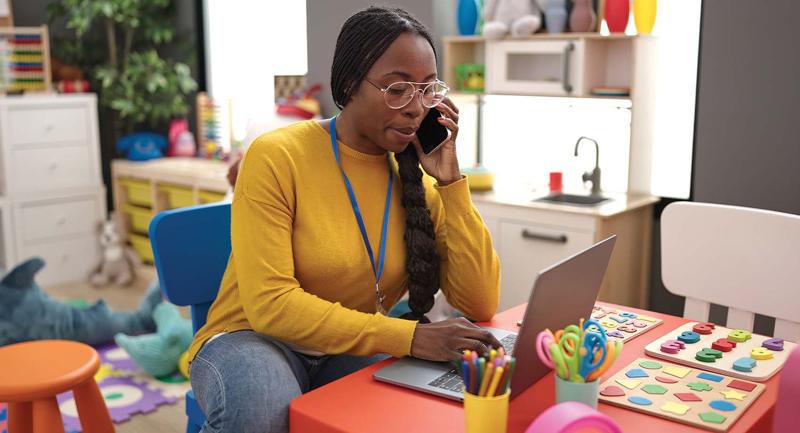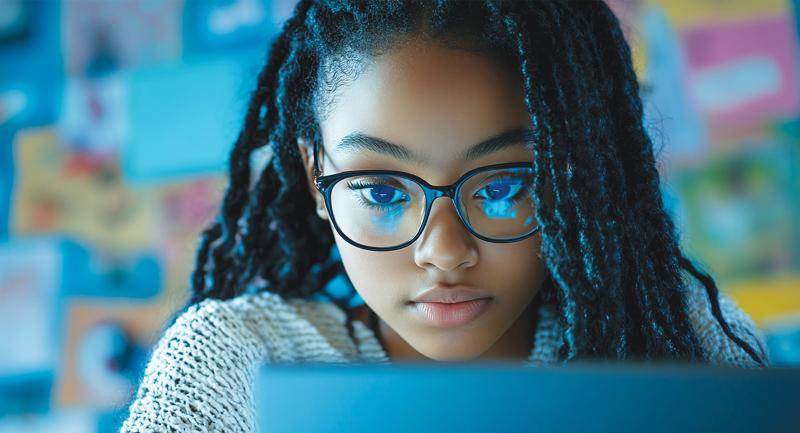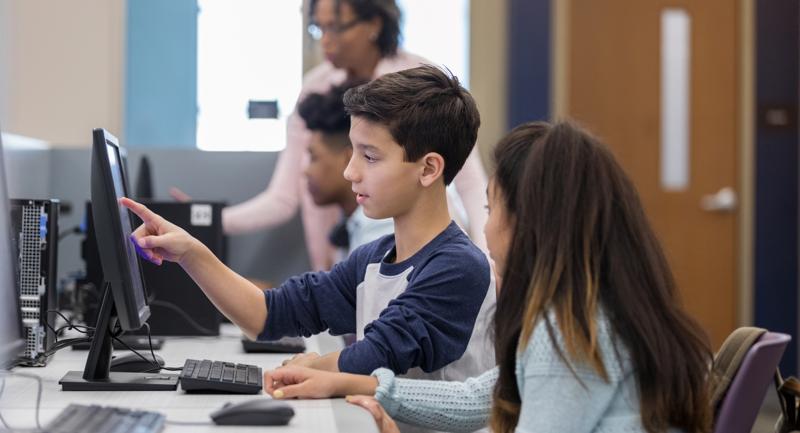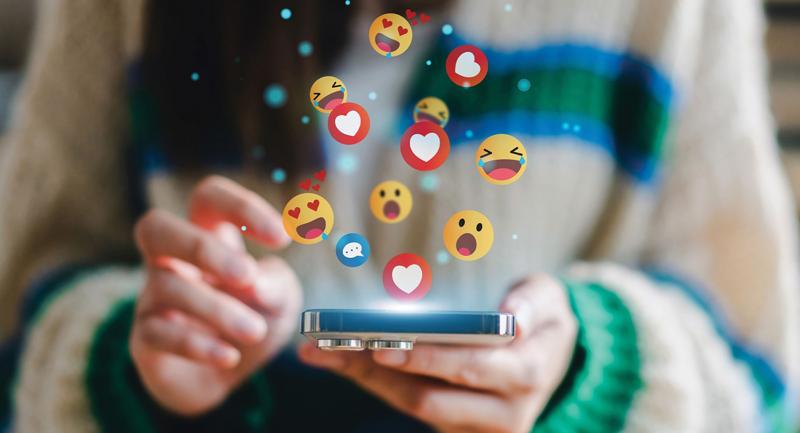Technology is changing literacy, claim Web 2.0 advocates, university researchers, edgy librarians, pundits of the blogosphere, and the media. The visual is ascendant, text is secondary—and linearity? Forget about it. Web surfers flip from one information wave to another, gathering and synthesizing. Beginning, middle, and end are up for grabs.
In the classroom, some educators are attempting to harness the power of technology to increase literacy rates for struggling students, but does using technology really make a difference? An initial assessment of the research on the current generation of technology used to aid literacy yields interesting, if somewhat lackluster, results.
Stanford University education professor Michael Kamil, an advocate of technology's role in the classroom, notes that the national evaluation Effectiveness of Reading and Mathematics Software Products: Findings from the First Student Cohort found that technology didn't significantly influence student performance.
According to Kamil, however, that's not necessarily a bad thing: "The important aspect, from my perspective, is that these were classroom programs that replaced about 10 percent of instructional time. What that means is that since there was no difference, the software programs were as good as the teacher." Such findings, Kamil explains, could signify a shift from teachers using technology as merely a supplement to using it as the means of instruction.
Now, Kamil notes, newer and better technology is coming out all the time to make the option of classroom technology even stronger, especially for struggling readers and writers. He points to advances in speech recognition technology, such as Carnegie Mellon University and the University of Pittsburgh's research-based Reading Tutor project or programs such as Pearson's Quick Reads, as examples of tools that can improve students' reading fluency.
Despite the lack of data showing that technology has a tremendous effect in the classroom, teachers have found that using technology may help address students' specific learning needs. Charles MacArthur, a special education professor at the University of Delaware, explains that students who have learning disabilities, including dyslexia, typically need help with transcription processes to produce text, spell, and punctuate correctly. However, any students having trouble with writing fluency can benefit from teachers integrating technology into the classroom. And sometimes tried-and-true technology works the best.
"The only tool that has enough research behind it is plain, old word processing," MacArthur says. "Students with writing difficulties are able to produce a text that looks good, and they can go back and fix things without introducing new mistakes."
According to MacArthur, word-prediction software, which generates lists of potential words as students type initial letters into the computer, can also help students dramatically improve the legibility and spelling of their writing. In a 2006 article in the Handbook of Writing Research, "The Effects of New Technologies on Writing and Writing Processes," he explains that his series of three studies of 9- and 10-year-olds with severe spelling problems showed that these students' legible words increased from 55 to 85 percent, and their correctly spelled words rose from 42 to 75 percent.
Creating a Buddy System
Carol Greig, a former technology coach, won the International Reading Association's 2008 Presidential Award for Reading and Technology for her Reading Buddies program, which uses MP3 players to increase the literacy skills of beginning readers at Howard Elementary School in Eugene, Ore.
In developing the program, Greig worked with University of Oregon researcher and pioneer in computer-supported studying Lynne Anderson-Inman to test its effectiveness with kindergarten students. Using the Dynamic Indicators of Basic Early Literacy Skills test, Greig tested the group of students every two weeks on pre-reading and early reading skills, such as naming letters, phonemic awareness, and ease of decoding nonsense words accurately.
After six weeks of using Reading Buddies, Greig says, "We saw kids who had been operating at the 10th and 20th percentiles moving up to the 40th and 50th percentiles." At the end of the 10-week pilot, Grieg says, "[Students] were at or above the test's benchmark."
Because Reading Buddies is a take-home program, students bring home an MP3 player four days a week to listen to podcasts of Greig reading a 25-minute story. Each student receives a packet containing the book from which Greig is reading, questions to reflect on, and scripts and songs that direct students to sound out and trace target letters and then match them to pictures (for example, "A" is for alligator, apple, anchor, and so on).
The Reading Buddies program promotes the school's whole child approach, Greig says, by encouraging multiple modalities—such as visuals, tracing letters, auditory, and songs—and requiring students to discuss the material with parents or an adult family member in the home. The following morning, children return their packets, which include a completed parental checklist or comments. Greig then has a brief conversation with each student to tie the Reading Buddies work back to the day's school lesson.
Greig found that, for these students, the program's benefits included higher test scores as well as increased comprehension and confidence. "These were kids who, in a large or small group, would just as soon not give answers—they'd be in the back making trouble," Greig notes. "In two weeks, they were the kids raising their hands and saying, 'I know that.'"
At Howard Elementary, teachers also use technology to assess students' individual comprehension and written work. Web-based programs, such as KidBiz3000 and Achieve3000, generate data based on reading assignments set at students' individual ability levels. The teachers then use the results to differentiate instruction for their 2nd through 5th grade students.
For the teachers at Howard Elementary, technology enhances their ability to engage and challenge students.
Addressing Students' Special Needs
To help students who have auditory processing problems or dyslexia, schools are using various computer technologies to make students more aware of the sounds of words when others speak or when students themselves read aloud. At Bridges Academy in Winter Springs, Fla., 2nd through 12th graders with learning disabilities use technology and receive regular instruction over the course of two to four years "to close the academic gap," with the goal of mainstreaming them back into local public schools, says Executive Director Jacky Egli, who has worked in the field of learning disabilities for 30 years.
At the heart of Bridges Academy's reading improvement program is a two-hour block, five days a week, that includes 50 minutes of teacher-directed instruction and 50 minutes of intensive, technology-based intervention.
Pointing to the school's use of the FastForWord Language and FastForWord Literacy programs, Egli explains that computer technology can slow down a word's "sound signature" so that students become more aware of the phonemes that make up that word. For example, students who reverse the "b" and the "d" may do so because of auditory problems distinguishing those two phonemes, which are extremely brief compared to a typical vowel sound. To help retrain the brain to note the distinction between the two sounds, teachers highlight the differences by slowing down and amplifying the sounds slightly. Students then focus on them through computer activities. Typically, it takes many repetitions of the exercises to retrain the brain.
The technology "builds those auditory and language skills" of students, allowing them, generally, to be more receptive to learning because typically 80 percent of the instructional day relies on auditory information, Egli says. "They're better able to make use of classroom instruction because they can understand the language of the instructor better," she explains.
Recent summer school data revealed that this combination of technology and direct instruction helped some students improve as much as two grade levels in their word attack skills over six weeks, Egli says.
Recently, the Bridges Academy also started using Reading Assistant, a program that uses speech recognition technology to help students improve their reading fluency. At the high school level, students first listen to the computer read a passage from a novel. Using a headset with microphone, students then read the same passage aloud, and the program records the exercise. If a student stumbles on a word, the program automatically prompts with a correct pronunciation. Teachers use the data collected by the Reading Assistant software to see how many words students correctly read per minute and which words they struggled with. Teachers use this data to inform classroom instruction.
Egli notes that using technology alone is not the answer to improving literacy, but the tools help teachers move students toward their individual learning goals. "Using some of the technologies we have now, we can do some things that many of us hoped to achieve for a lot of our special-needs kids—but at a much more efficient rate," she says.








